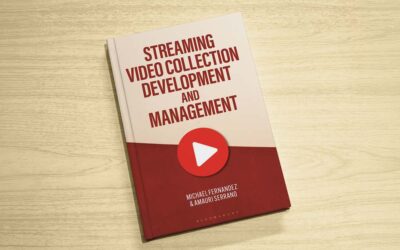Google Arts & Culture
Lauren Hays
You are likely familiar with Google Earth, but have you explored Google Arts & Culture yet? I ask because for those who work in special libraries and museums it is an incredible resource.
I discovered this site earlier this year (I may be late in the discovery!), and did reference it in my post about creating 360 videos. However, I have spent more time exploring it in the past few months and am amazed at everything it has to offer.
So far, my favorite features include:
- Nearby: with location turned on you can find nearby museums and exhibitions
- 360 videos of museums
- Pocket Gallery: lets you view galleries in AR
- The representation of artists from all over the world.
One new feature that I believe many will be excited about is Woolaroo. It “recognizes objects from your camera and translates them” into indigenous languages. Indigenous languages represented in the tool include: Yugambeh, Yiddish, Tamazight, Rapa Nui, Nawat, Maori, Calabrian Greek, Sicilian, Louisiana Creole, and Yang Zhuang.
Another feature that I recently discovered is Blob Opera. Previously, I had read about Magenta, but was unaware of Blob Opera before this week. The ability to use machine learning to create music is a fascinating development. Unpacking how artificial intelligence may impact art in the future is outside the scope of this post, but it does open a lot of questions for discussion.
Furthermore, Street View in Google Arts & Culture allows you to view cultural sites and museums. Currently, there are 10 museums you can visit in Street View, they are: The British Museum, London; Guggenheim Museum, New York City; Musee d’Orsay, Paris; National Museum of Modern and Contemporary Art, Seoul; Pergamon Museum, Berlin; Rijksmuseum, Amsterdam; The J. Paul Getty Museum, Los Angeles; Uffizi Gallery, Florence; MASP, Sao Paulo; and National Museum of Anthropology, Mexico City. There are also six exhibits that are closed that you can still see online. These six exhibits are: The Floating Piers, Everywhere is Anywhere is Anything is Everything, Tour Paris 13, Biennale Arte 2015, Art at Large, and A Subtlety. Finally, there are 5,378 museum views with Street View.
Additionally, for those looking for a more interactive experience, Play with Arts & Culture, provides games, crosswords, and coloring.
If you have the ability to use Chromecast, you can send images to your TV from the site. You can also download the Google Arts & Culture app from either Google Play or the App Store.
For special libraries that want to showcase an exhibit or highlight resources, I suggest exploring partnership opportunities.
While there is nothing like visiting special collections and exhibits in-person, I hope this post encourages you to explore Google Arts & Culture, and consider introducing it to your visitors and library community. It can expose many new people to art and culture that do not have the ability to travel, or the opportunity to see exhibits that have limited showings.
Lauren Hays
Lauren Hays, PhD, is an Assistant Professor of Instructional Technology at the University of Central Missouri, and a frequent speaker on topics related to libraries and librarianship. Her professional interests include information literacy, educational technology, library and information science education, teacher identity, and academic development. Please read Lauren’s other posts about skills for special librarians. And take a look at Lucidea’s powerful integrated library systems, SydneyEnterprise, and GeniePlus, used daily by innovative special librarians in libraries of all types, sizes and budgets.
Similar Posts
Keeping Up with Copyright and Generative AI: What Special Librarians Need to Know
As generative AI becomes more prevalent copyright law is evolving to address its impact. A new report from the U.S. Copyright Office provides guidance on what is (and isn’t) copyrightable.
Understanding Shadow AI: Risks Costs and Governance
AI can enhance search discovery and efficiency but unsanctioned adoption—known as “shadow AI”—can lead to budget overruns and compliance risks. Here’s how to evaluate AI pricing models and build a governance strategy that balances innovation with cost control.
Interview with an Author: Fernandez on Streaming Video Collection Development
As demand for streaming video in libraries grows so do the challenges of managing access budgets and licensing. Co-author Michael Fernandez shares key insights from his book “Streaming Video Collection Development and Management”.
Interview with the Author: Saffady on Information Governance Technologies
Technology is at the heart of modern information governance shaping how organizations manage records and ensure compliance. In this interview expert William Saffady shares insights on the essential technologies driving the field and what information professionals need to know.






Leave a Comment
Comments are reviewed and must adhere to our comments policy.
0 Comments